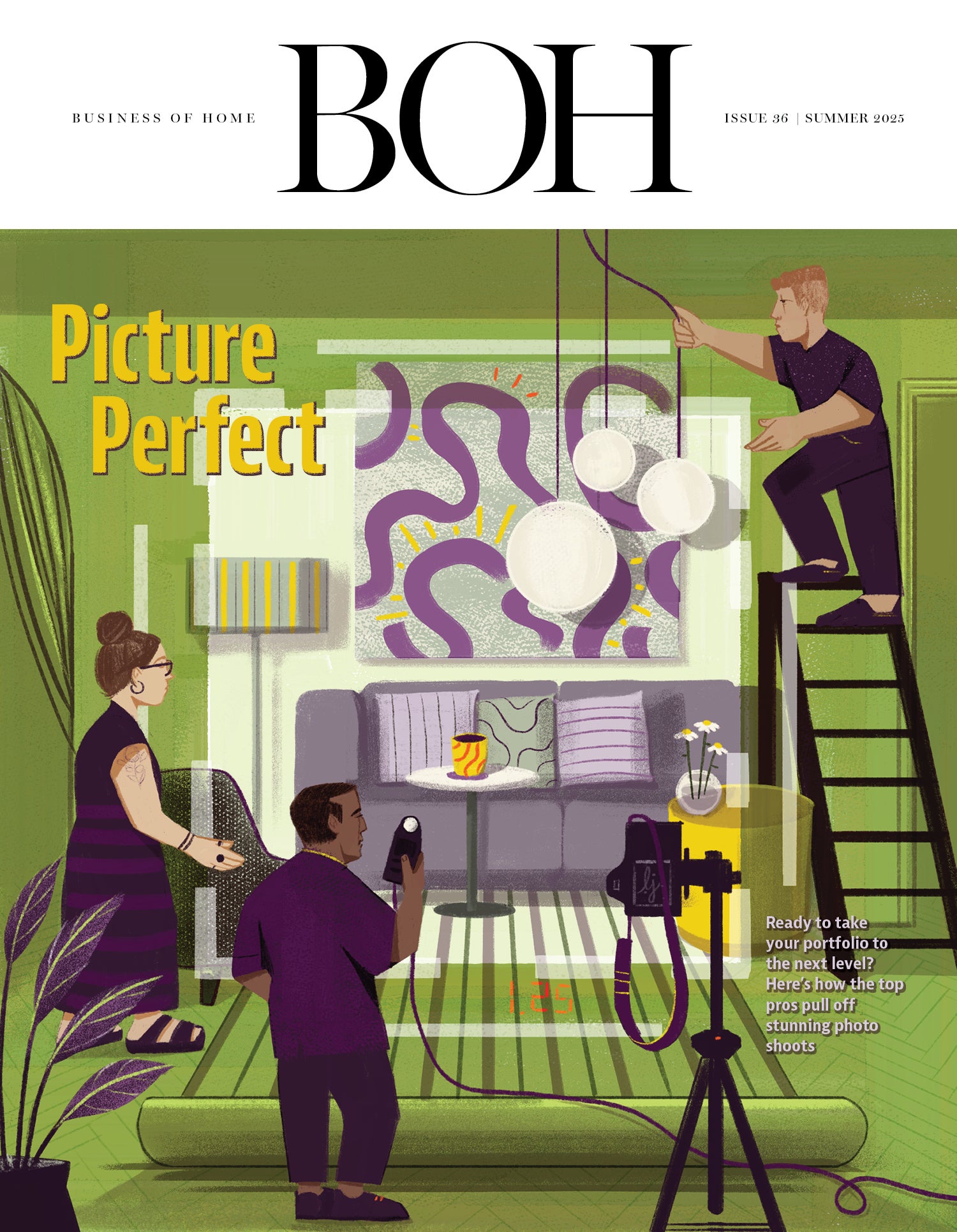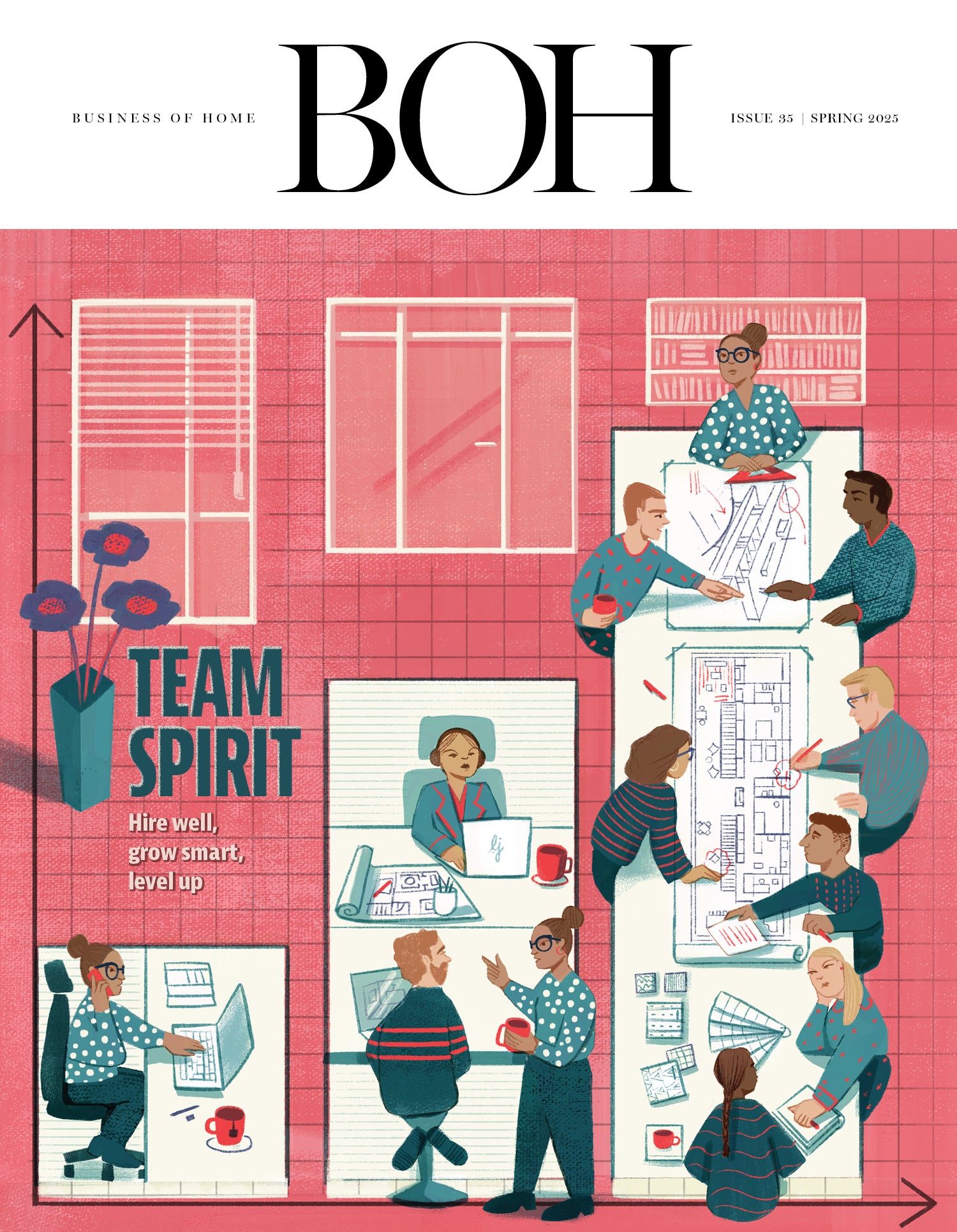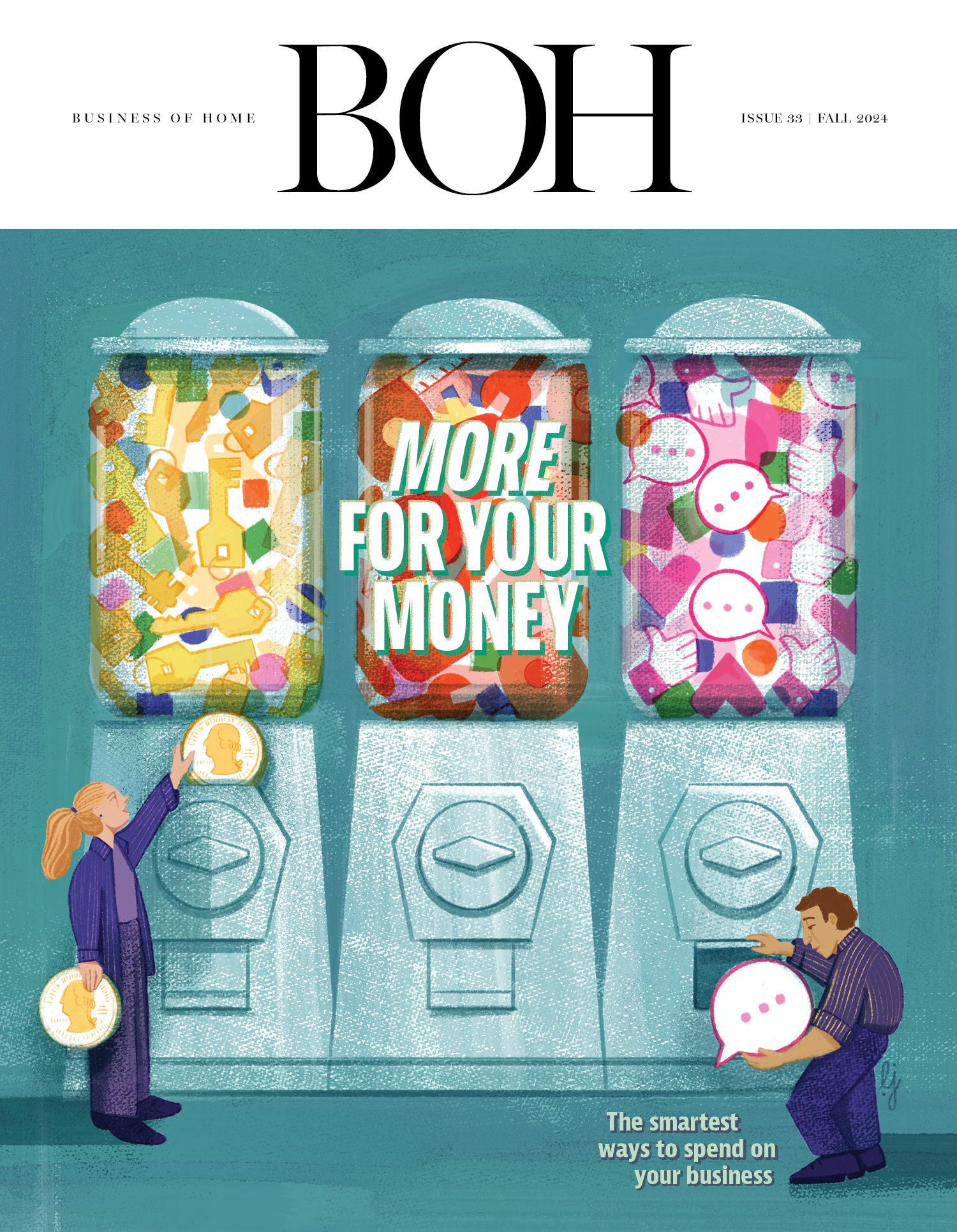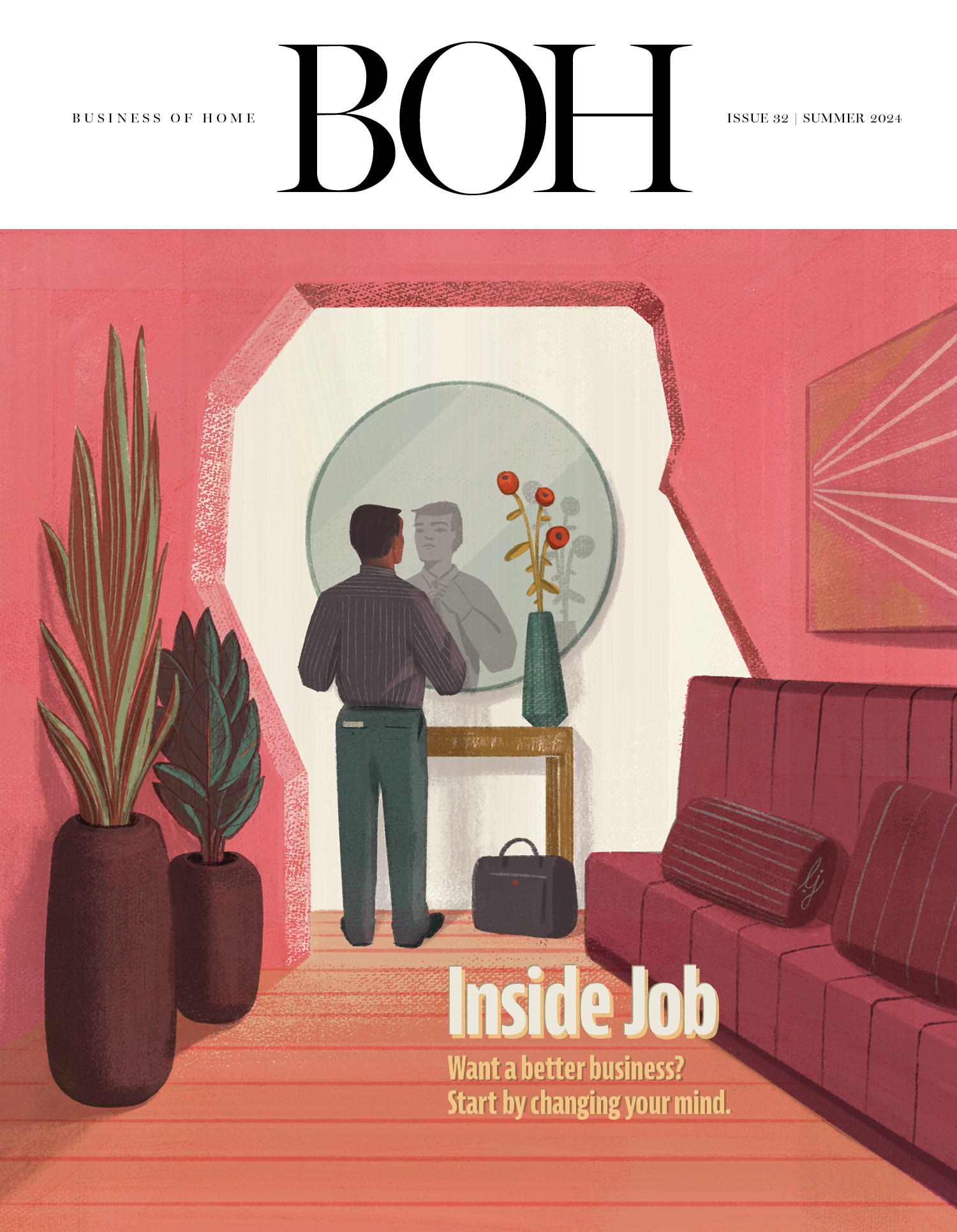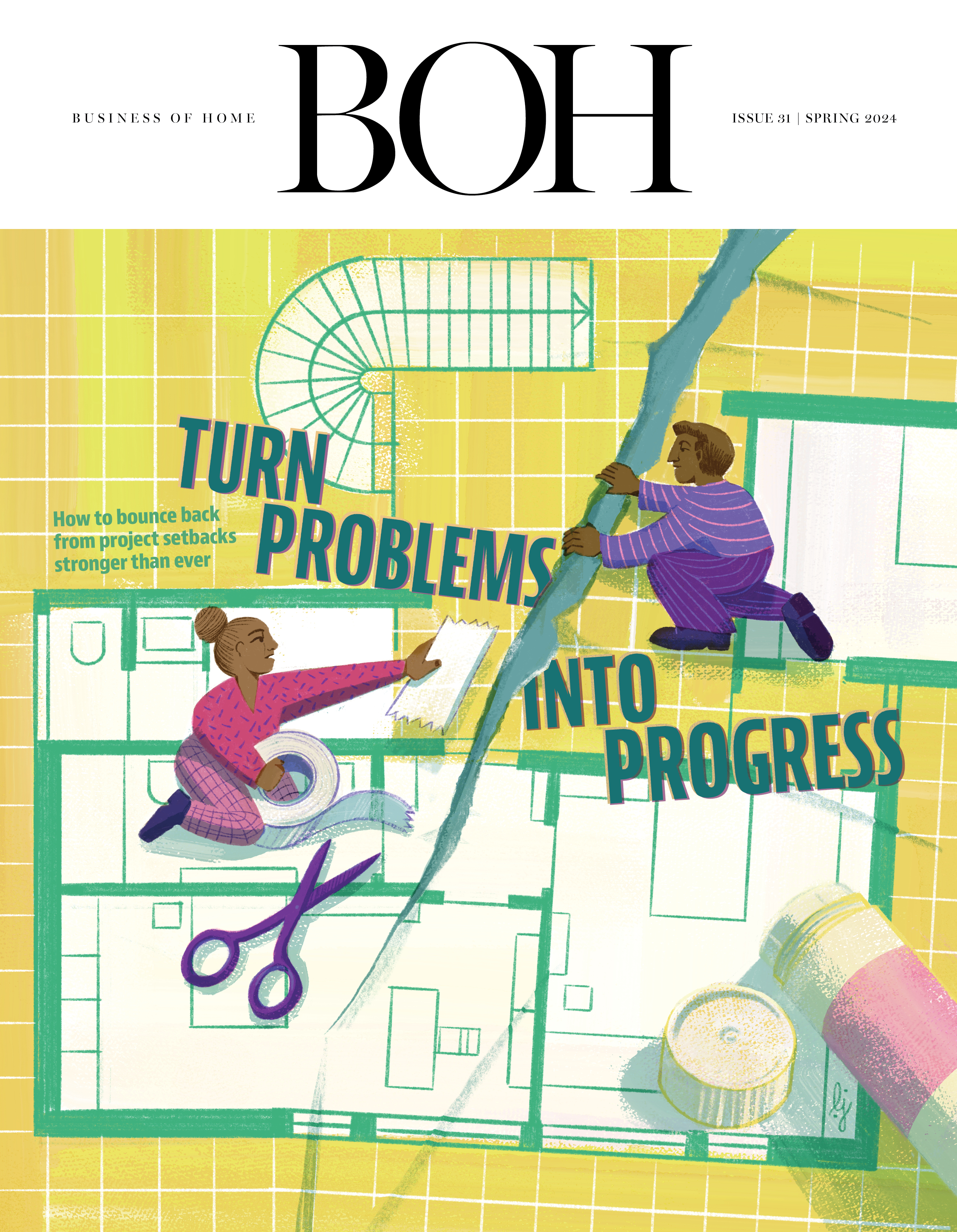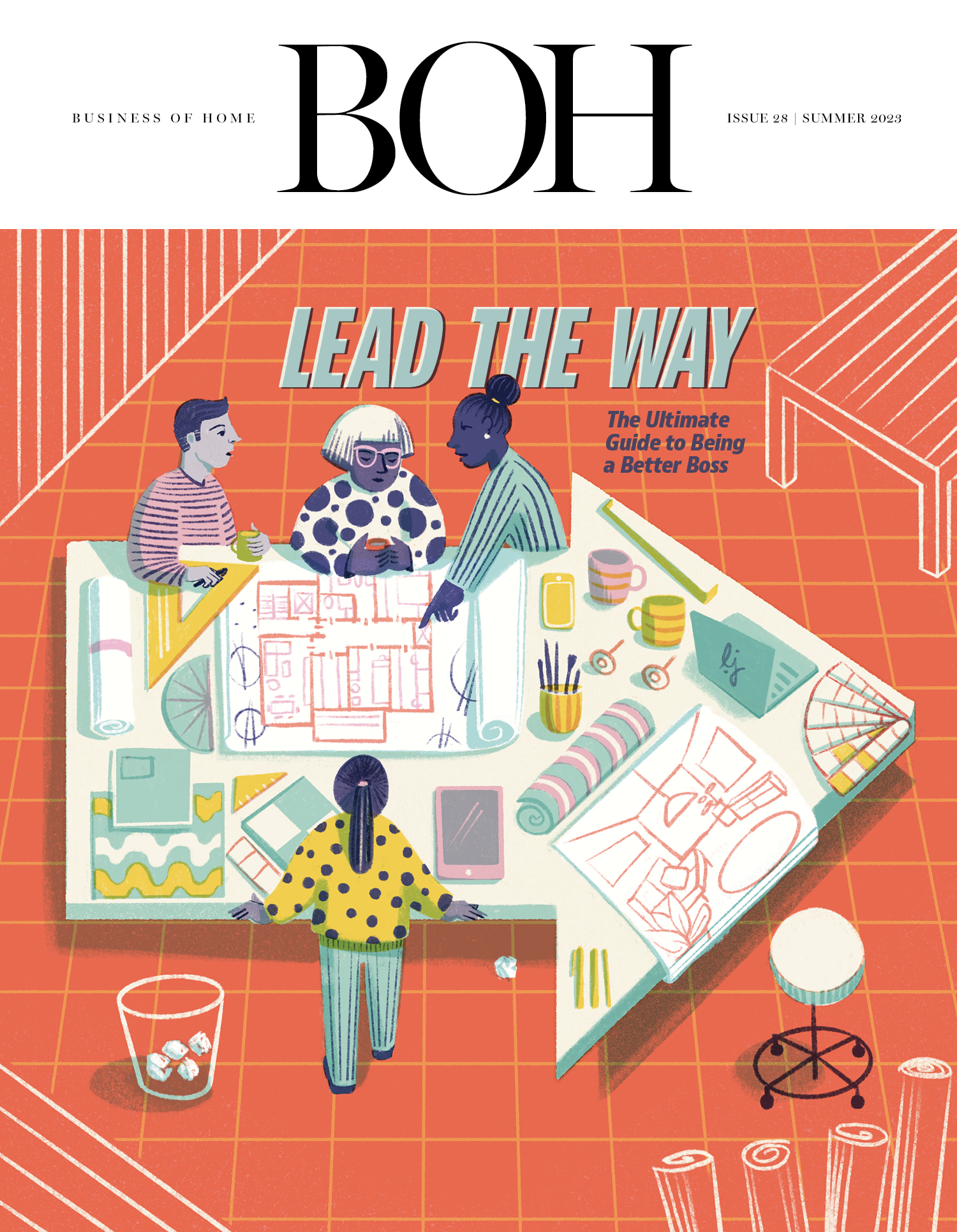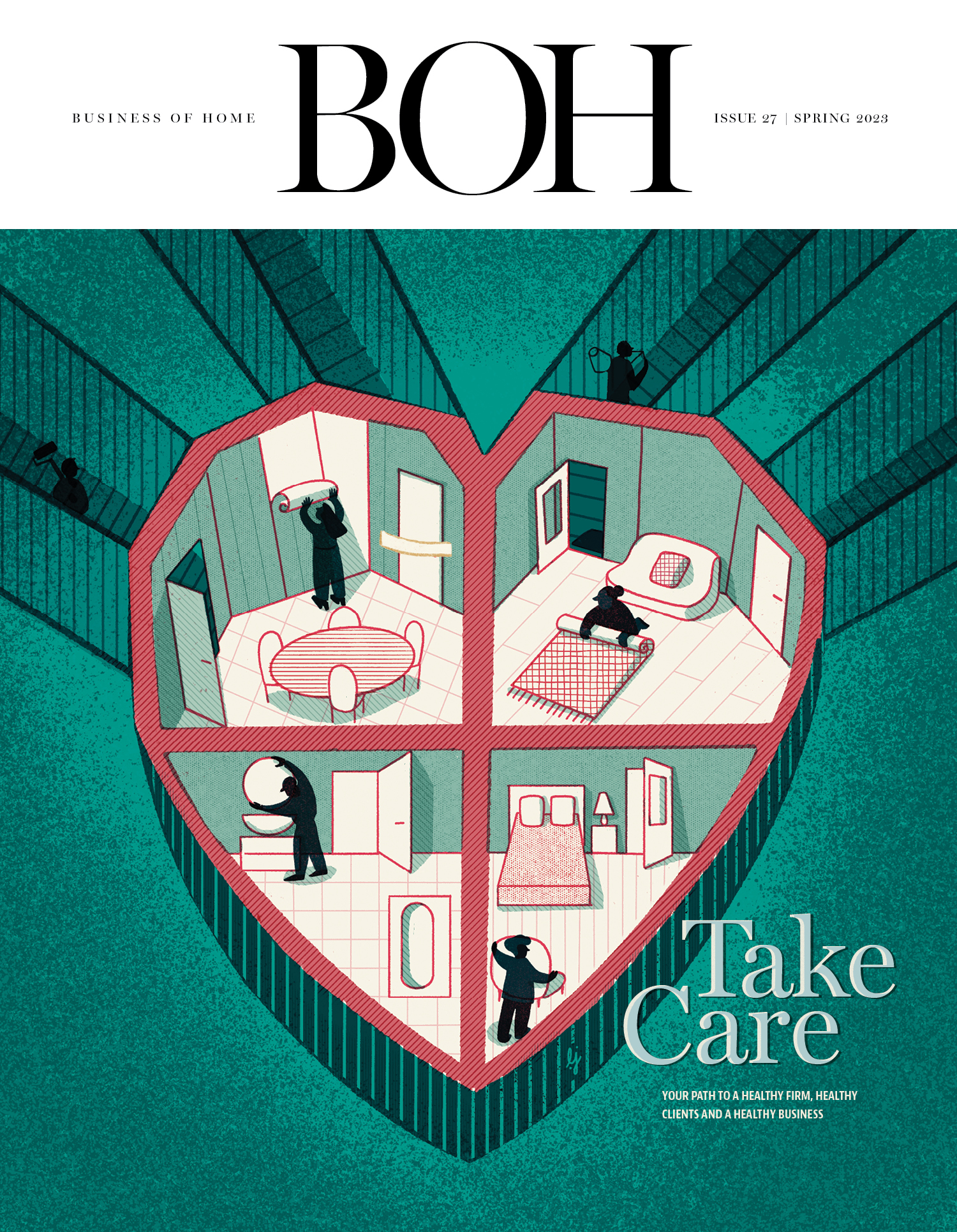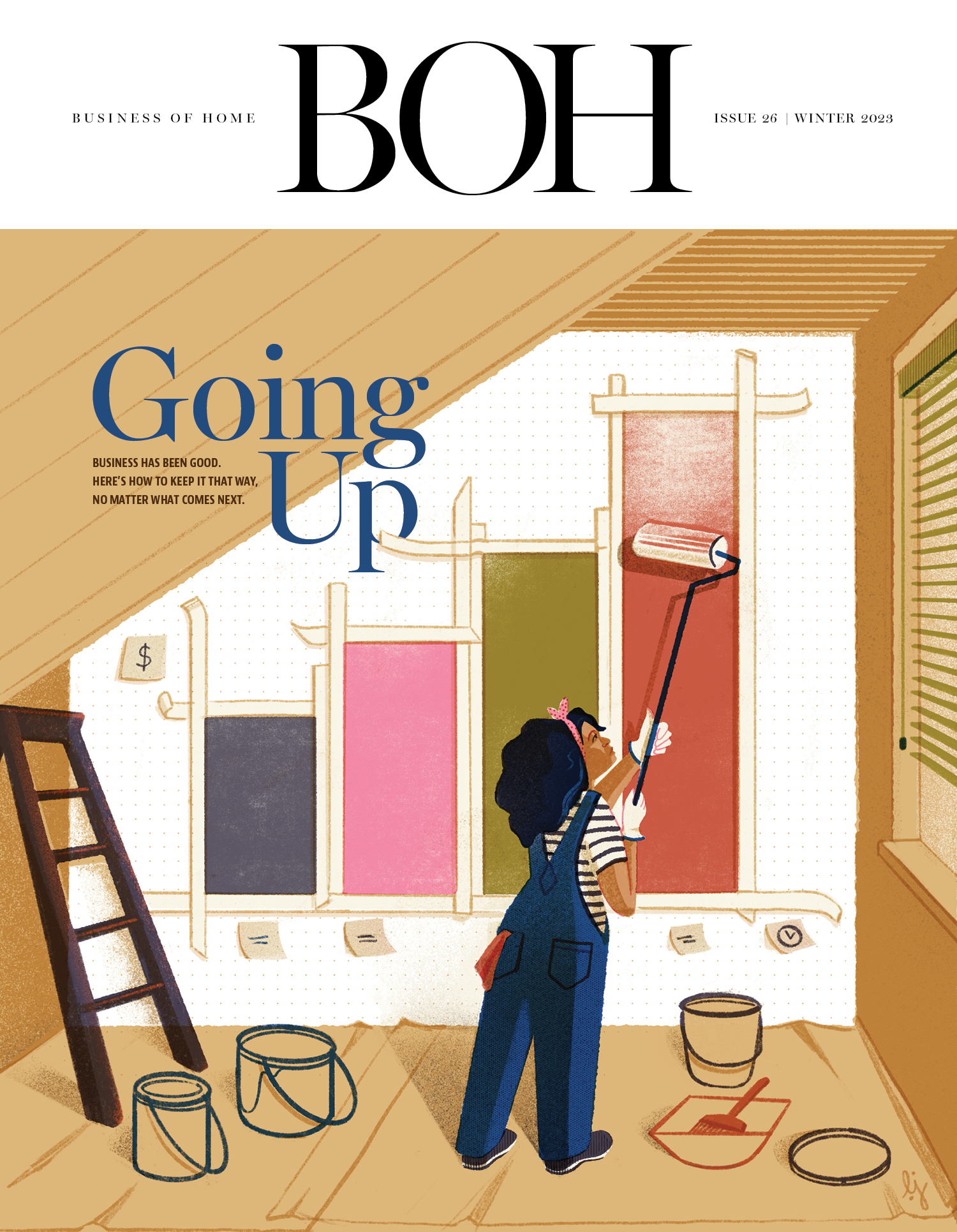A client of mine, an owner of a good-sized design firm, recently expressed to me her frustration with her design team after a conflict over their compensation plan left her feeling unappreciated. Her intent was to richly reward her employees with commissions on top of their hourly pay rate as a way to incentivize them to sell more goods and services. But offering a salary-commission combo ended up causing problems she didn’t anticipate.
Here’s what happened: By paying employees a high percentage of their hourly rate for design-related, billable work, she was unable to get them to do nonbillable work—essential to-dos like attending meetings for project communication and training purposes, attending markets to expand their resources and get design inspiration, going to networking events to attract new business, dealing with freight claims to ensure client satisfaction, and doing project administration like tracking orders. To exacerbate the attitude problem, the designers became competitive when new projects came into the firm, and reacted negatively if they didn’t get the plum jobs that promised to produce the most commissions.
On top of that, the commission structure encouraged employees to pick the most expensive options for the projects, which corroded client trust and satisfaction. Clients felt that their designers were intentionally ignoring the budgets and selecting unnecessarily expensive items.
The compensation structure—along with complete schedule flexibility, which allowed the designers to manage their own remote work schedules and take time off whenever they felt like it—forced the owner to constantly put out fires the designers weren’t willing to address because they didn’t get paid to do it.
This model also took a financial toll: The employee payroll was too high a percentage of revenue, and the firm’s net profit margin suffered as a result.
When this client came to us, she was frustrated and in tears. She felt that she was working for her entitled team. She was too focused on being a well-liked boss rather than on running a business that served the clients well—and therefore rewarded her for the hard work and risk of being a business owner.
Commission or No Commission?
When another client came to me recently and asked if he should institute a commission structure, I adamantly said, “No!” I’ve helped many clients completely revamp their compensation structure over the years, and every one of them has thanked me later for convincing them to stop the competitive and entitled madness that a commission structure encourages.
It took months of reflection and retooling to come up with a new structure that the first client finally presented to her employees at the end of 2024. Unsurprisingly, one person left because she didn’t like the new compensation plan, which was paired with a required amount of in-office hours and a renewed focus on completing the role’s administrative tasks.
The firm owner was very fair in giving a salary that guaranteed a great income as well as a bonus structure based on meeting annual goals. Now her employees earn additional compensation by achieving mutually beneficial goals.
How to Implement a Bonus Structure
Want to reward your employees in a way that celebrates their successes while encouraging them to be team players? Here’s an example of how an employee can earn a bonus by achieving goals.
First, establish the employees’ company and personal goals. A company goal is something that benefits the firm—for example, 100 percent of the employee’s time is tracked and logged by Friday each week, or no later than 10 a.m. on Monday. This is a company-set goal that applies to everyone. (This required goal counts for 50 percent of the performance bonus.)
Personal goals are where you can encourage growth and development for each team member. Examples might be that the employee achieves a minimum profit margin (set by the owner) on all projects they oversee, or that they take a project management class and achieve certification. (I suggest one or two personal goals; if there are two, then each counts as 25 percent of the performance bonus.)
In this model, each team member can earn up to a certain percent of their annual base salary. This figure varies by company, and the owner should run a financial model with their chosen number—I’ve seen anywhere from 3 to 5 percent work well.
A Tiered Payout
A tiered payment structure allows the employee an opportunity to earn bonus compensation based on results. (I don’t recommend an all-or-nothing approach, as it can do the opposite of motivating your employees.) Here’s what that might look like:
100 percent of goals met = 100 percent of maximum performance bonus
90 percent of goals met = 75 percent of maximum bonus
80 percent of goals met = 50 percent of maximum bonus
If less than 80 percent of goals are met, the employee is not eligible for a performance bonus.
For example, if the maximum bonus is set at 3 percent of their salary, a team member who makes $80,000 annually can earn a performance bonus of up to $2,400. For a principal who chooses to pay bonuses twice a year (with payouts in January and July), the bonus potential for each window is $1,200. Half of this amount ($600) is tied to personal goals and half to company goals.
If 90 percent of the personal goals are met during the first half of the year, the personal performance bonus is 75 percent of $600, which comes to $450.
If 100 percent of the company goals are met during the first half of the year, the company performance bonus is $600.
The total first-half bonus would be $450 plus $600, which comes to $1,050.
If the employee hits the same targets for the second half of the year, their total bonus earned for the full year would be $2,100.
As the old saying goes: You must inspect what you expect. Compensation drives behavior, so choose your compensation and incentive plan carefully.
For more data on employee compensation from the 2024 Interior Design Business Survey, download the report and scroll to page 41.
____________
Gail Doby is co-founder of Pearl Collective (formerly Gail Doby Coaching & Consulting), an interior design business consultancy that helps designers, architects and other creatives increase their profitability. Doby ran her own design firm in Denver for nearly 20 years and has a degree in finance and banking. Since 2008, she has been helping designers scale their businesses profitably and reach financial freedom. As a coach, mentor and business transformation specialist, she shares innovative ways to overcome the roadblocks, challenges and detours creative entrepreneurs face. She is also the bestselling author of Business Breakthrough: Your Creative Value Blueprint to Get Paid What You’re Worth. Her goal is to empower design industry clients to differentiate themselves, drive measurable results, achieve business projections, and create personal satisfaction through game-changing strategies and business practices.




